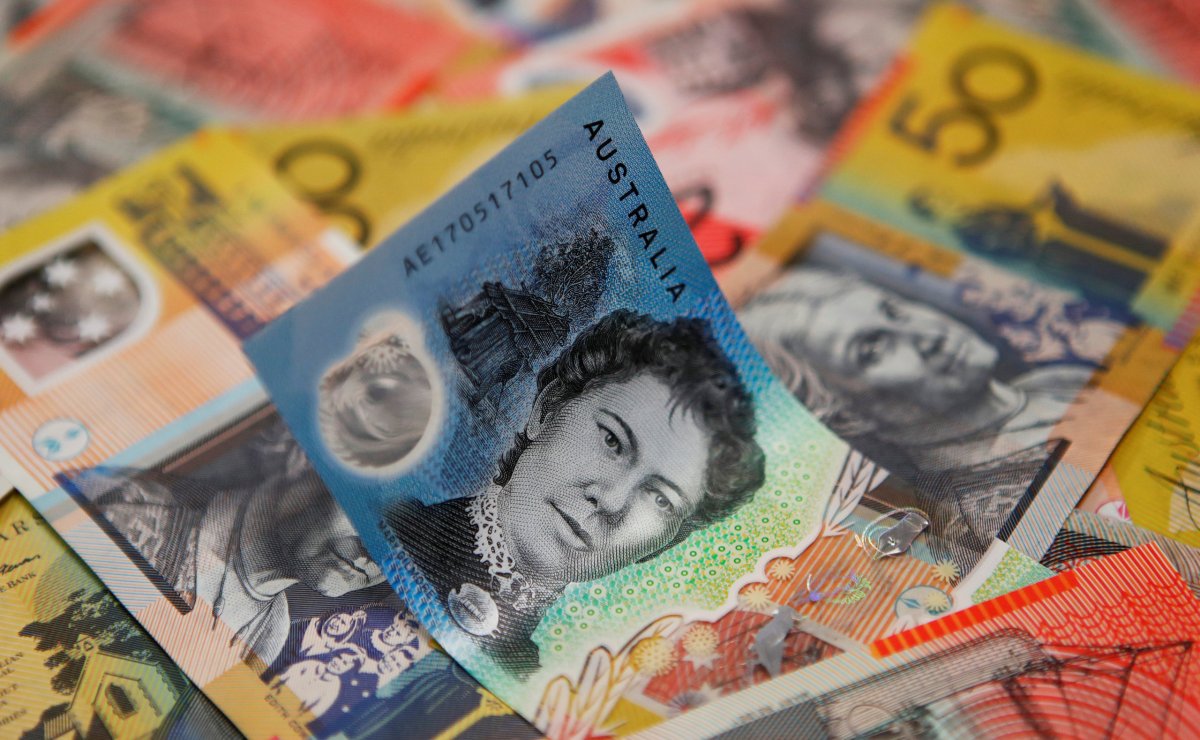By Swati Pandey
SYDNEY (Reuters) – Analysts have lifted their forecasts for the Australian and New Zealand dollars, although the antipodean currencies still seem set for a remarkably dull year despite raging volatility in global markets recently, a Reuters poll showed.
The survey of 50 analysts charted a steady course for the Australian dollar, which is seen at $0.7900 three months out, $0.7800 in six and back at $0.7900 in one-year. Analysts had earlier forecast the Aussie at $0.7700 over the year.
The currency slid from a 2-1/2 year peak of $0.8136 in late-January to a more than one-month trough of $0.7766 on Friday, as investors fled from perceived risky assets to safer harbors of bonds and the Japanese yen.
The Aussie is a favored liquid hedging proxy during times of financial stress and moves can often be volatile in the currency.
That might explain the wide range in the forecasts from as low as $0.7000 and as high as $0.8500 on a one-year horizon.
The bearish case rests mainly on the Aussie’s vanishing yield premium with the Federal Reserve widely expected to lift U.S. interest rates above Australia’s this year, perhaps as early as March.
That would be a rare event. The last time U.S. rates were higher was in January 2001, when the Aussie was around $0.5600.
Bond markets have already shifted to reflect that outlook with the premium paid by Australian two-year debt over U.S. paper turning negative for the first time since 2000. It had been as high as 60 basis points as recently as September.
“The problem is that Australia’s economic growth has come with leverage,” said analysts at Morgan Stanley, which sees the Aussie at $0.7000 in one year.
“We expect the Australian economy to weaken via moderating domestic demand, with rising global funding costs working as the catalyst.”
The country’s household debt to income ratio is at a record high 190 percent. The heavy indebtedness means that ordinary Australians are penny pinching at a time when wages growth is painfully slow.
That is one reason the Reserve Bank of Australia (RBA) has left rates at a record low 1.50 percent for more than 1-1/2 years and is likely to stay there for a while yet.
Yet, the Aussie has shrugged off most bearish indicators to jump almost 3 percent in January. It climbed 8.7 percent in 2017 to be among the best performing major currencies last year.
The buoyancy has largely come from optimism about global growth and in-turn higher prices for Australia’s major commodity exports.
The story was much the same for the New Zealand dollar. The median forecast put the kiwi at $0.7300 for one month, $0.7175 for three, $0.7100 for six and one-year.
The kiwi is currently at a one-month low of $0.7203 having stumbled in the past week as risk appetite waned globally.
Helping the bears, the Reserve Bank of New Zealand left interest rates at record low 1.75 percent on Thursday, while signaling the period of easy monetary policy would last for months to come.
(Polling by Shaloo Shrivastava and Khushboo MittalEditing by Shri Navaratnam)



















